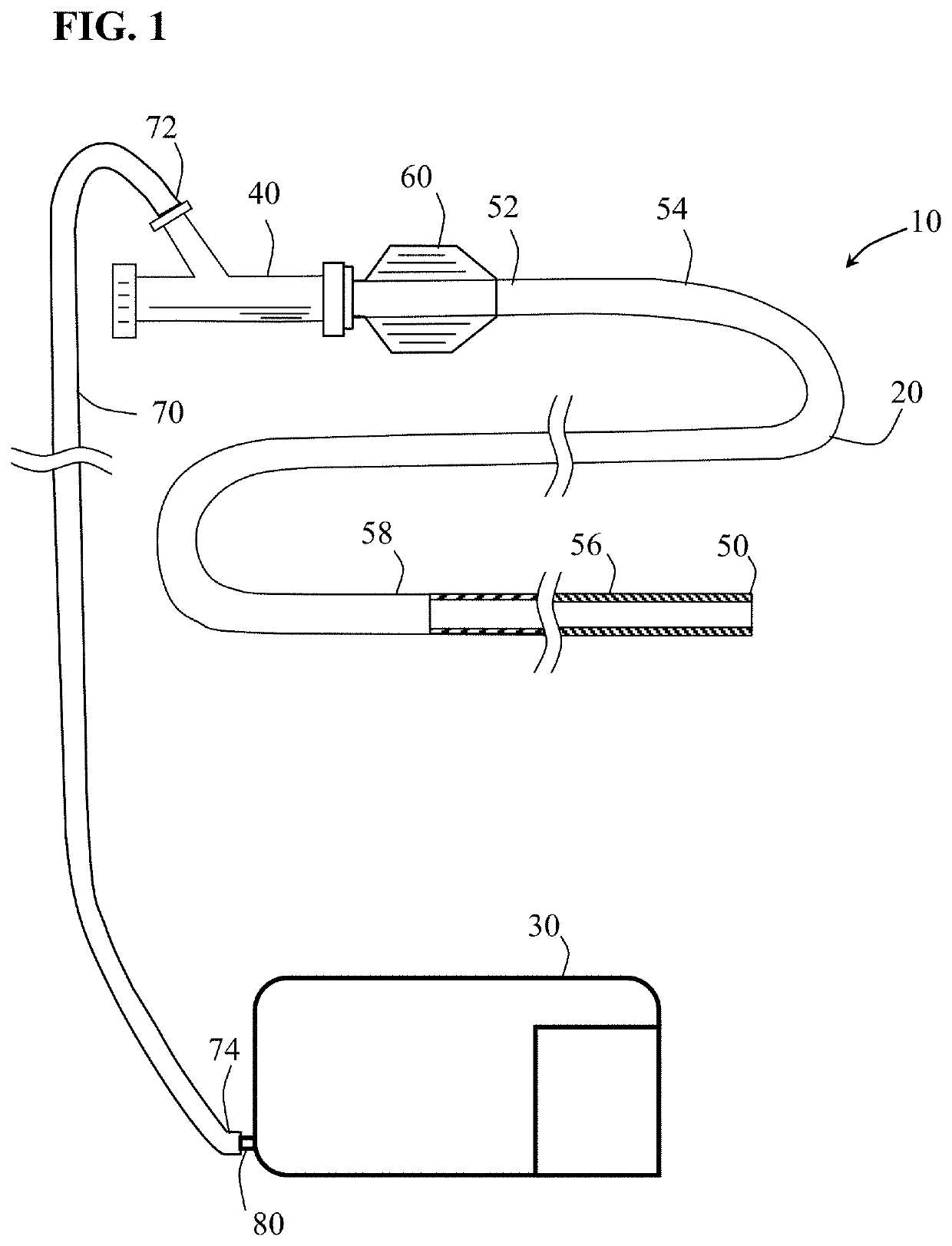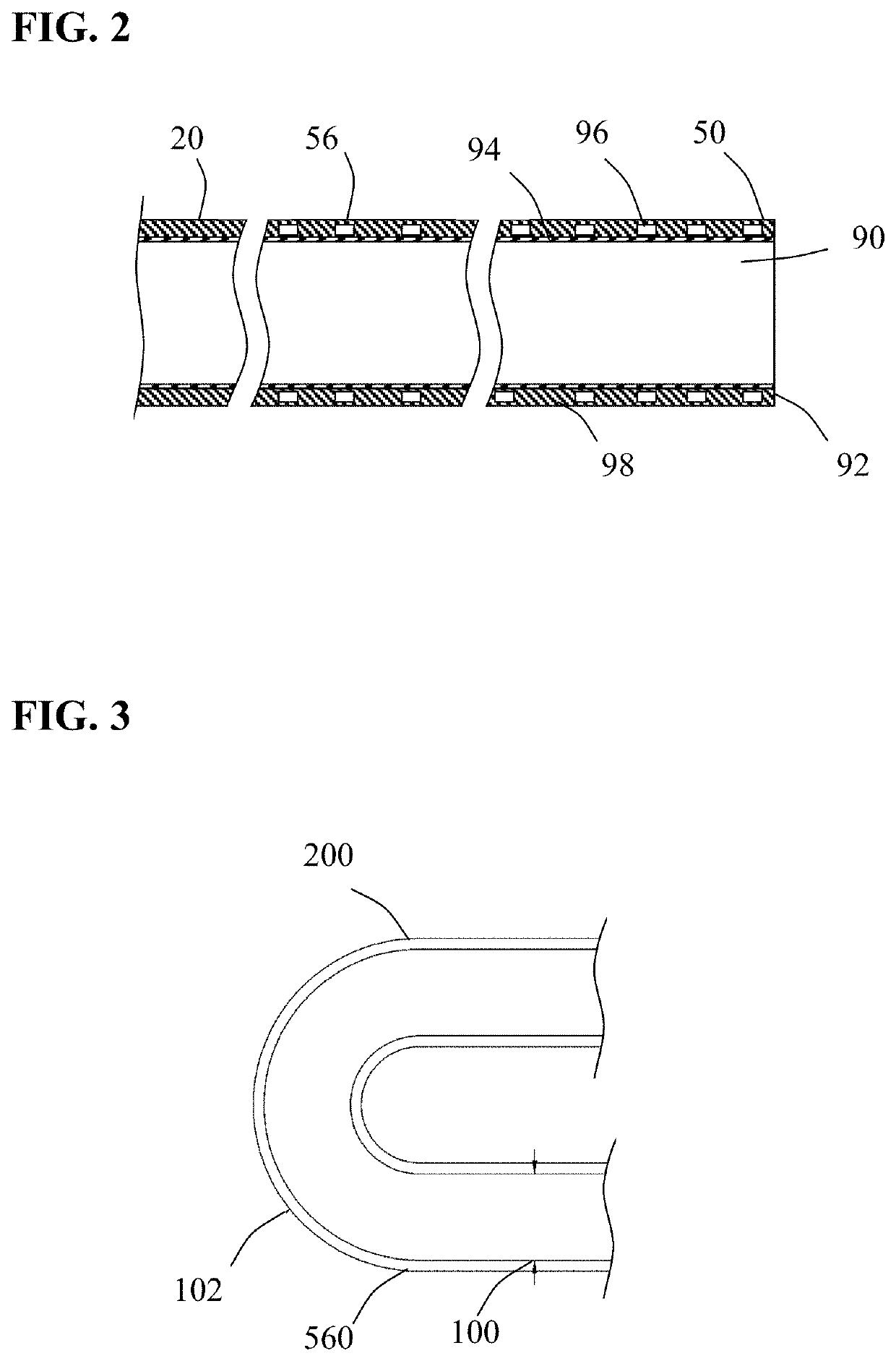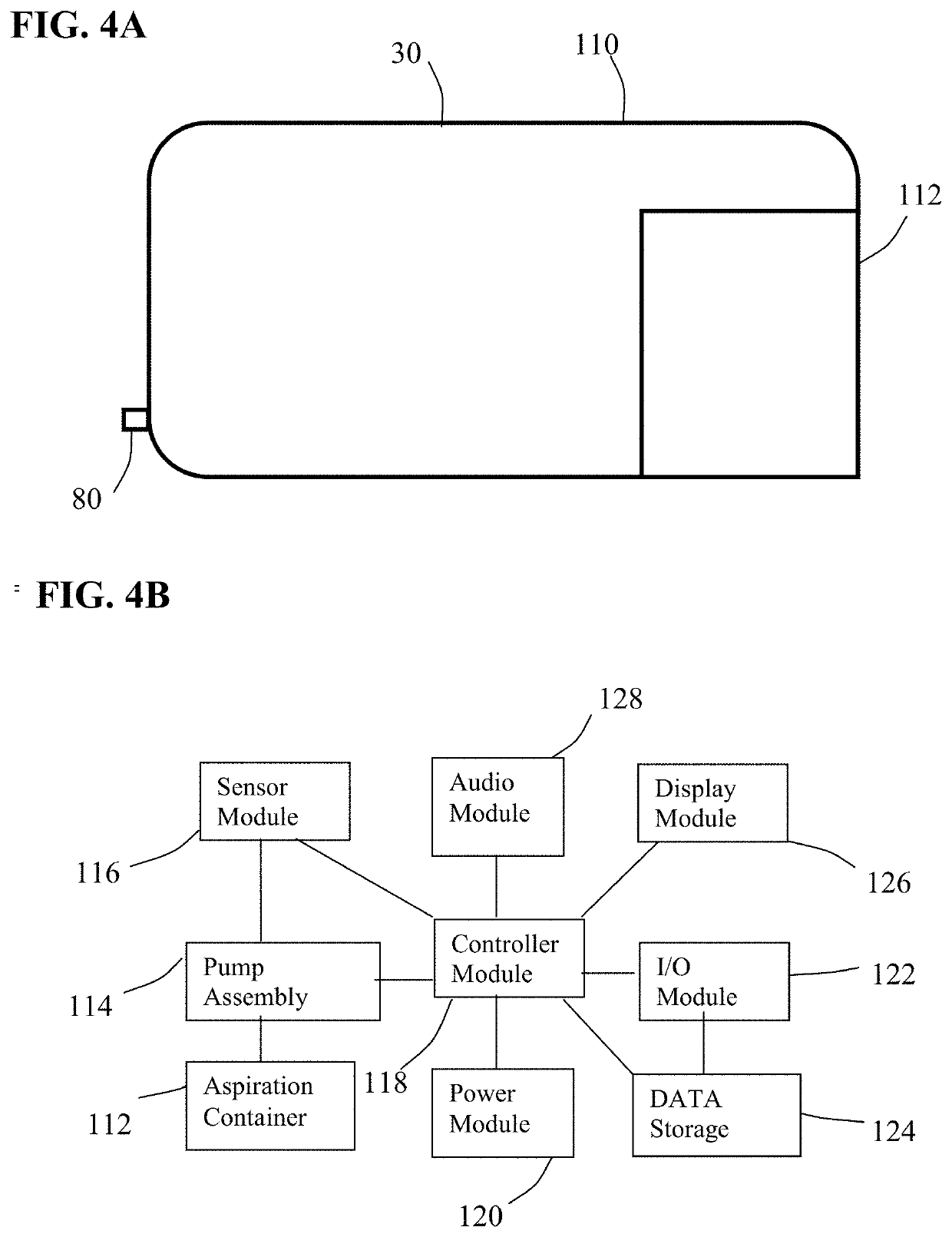Aspiration systems, devices and methods for treating ischemic stroke
a technology of ischemic stroke and ischemic stroke, applied in the field of ischemic stroke ischemic stroke ischemic stroke ischemic stroke treatment systems, devices and methods, can solve the problems of poor patient outcome, waste of valuable patient time, and reduced patient comfort, so as to minimize the dampening of the pressure signal and the effect of reducing the dampening of the pressure wave form
- Summary
- Abstract
- Description
- Claims
- Application Information
AI Technical Summary
Benefits of technology
Problems solved by technology
Method used
Image
Examples
Embodiment Construction
[0039]Methods and systems for capturing and removing an embolus or thrombus from an area of the body are herein described. While the terms “thrombectomy” and “thrombus” generally refer to removal of a specific type of embolus, the usage herein should be considered more broadly to include the removal additional types of emboli such as plaque, organized tissue fragments, clots and foreign objects that may block or restrict the normal flow of blood within the vasculature. In other nonvascular lumens within the body, the term “embolus” is herein construed more broadly, to include obstructions of a lumen such as “stones” lodged in a duct. FIG. 1 illustrates an embodiment of a thrombectomy system 10. Thrombectomy system 10 includes an elongate catheter 20, an aspiration pump 30 coupled together using connector 40. Catheter 20 has a distal end 50, a proximal end 52 and proximal, intermediate and distal sections (54, 56 and 58 respectively) positioned between said ends. Located at the proxi...
PUM
 Login to View More
Login to View More Abstract
Description
Claims
Application Information
 Login to View More
Login to View More - R&D
- Intellectual Property
- Life Sciences
- Materials
- Tech Scout
- Unparalleled Data Quality
- Higher Quality Content
- 60% Fewer Hallucinations
Browse by: Latest US Patents, China's latest patents, Technical Efficacy Thesaurus, Application Domain, Technology Topic, Popular Technical Reports.
© 2025 PatSnap. All rights reserved.Legal|Privacy policy|Modern Slavery Act Transparency Statement|Sitemap|About US| Contact US: help@patsnap.com



